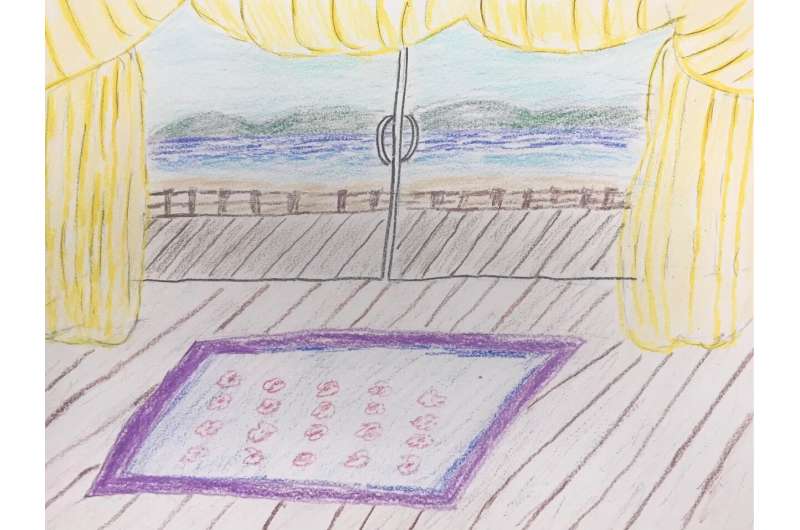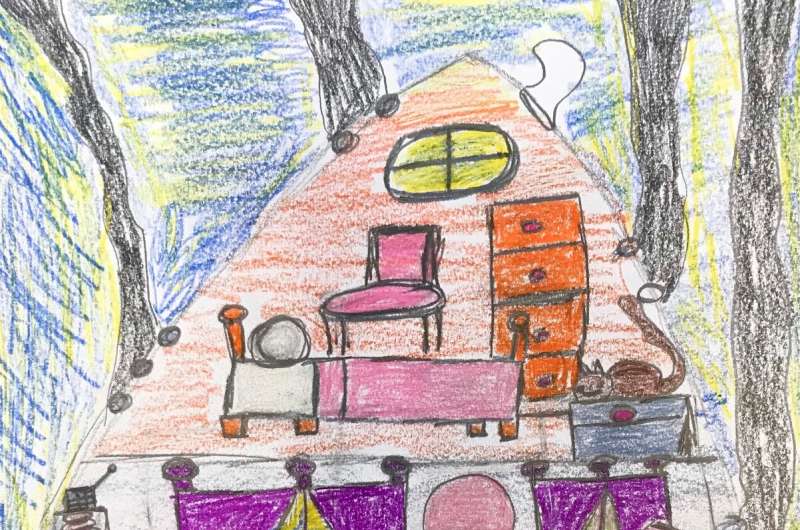This article has been reviewed according to Science X's editorial process and policies. Editors have highlighted the following attributes while ensuring the content's credibility:
fact-checked
trusted source
proofread
Making art shows promise in residential treatment setting for substance abuse disorder

Art therapy is a common activity for people receiving treatment for a substance use disorder, but the therapeutic value of making art as part of treatment programs hasn't been researched sufficiently.
Now, a University of Kansas study of women in residential treatment for substance use disorder (SUD) indicates the creation of visual art indeed may be an effective strategy to reduce "delay discounting." The findings appear in the Journal of Substance Use and Addiction Treatment and are some of the first to measure the effectiveness of art therapy in a residential treatment setting.
"Delay discounting refers to the devaluation of outcomes that require waiting, considering the wait as a subjective cost," said co-author Richard Yi, professor of psychology at KU and director of the Cofrin Logan Center for Addiction Research & Treatment at KU's Life Span Institute. "This concept relates to self-control and the ability to defer gratification. In the context of substance use, individuals who engage in substance misuse tend to discount future rewards more than others."
The pilot research project tracked 39 women living in a residential SUD treatment center in Lawrence who participated in a one-hour creative art session to create a visual representation of their aspirational "future home." The idea was for the art-making to promote "episodic future thinking" (EFT) or to boost their focus on positive situations to come—in this case, moving into their aspirational homes in a few years.
Participants were asked to add detail in their visual depictions and were guided in the art-delivered EFT (ArtEFT) by co-author John Sebelius, artist-in-residence at the Cofrin Logan Center and a working artist in Douglas County.
The researchers hoped to see if imagining their would-be homes through the making of art might increase participants' sense that "good things come to those who wait," as the saying goes.
"Episodic future thinking involves vividly imagining oneself in the future," Yi said. "Existing literature indicates that contemplating future scenarios, especially positive ones, can temporarily alter delay discounting. However, most research has been conducted in nontreatment settings, primarily experimental laboratory settings, using verbal prompts. The study aims to investigate if changes in delay discounting, facilitated through episodic future thinking, can enhance substance use treatment."
Participants were given choices between a smaller, immediate reward or a larger, delayed reward. Based on their selections, researchers calculated a discount rate, representing how much the value of the delayed outcome decreased for that individual due to the waiting period. This baseline measurement was taken before the session.
Following the ArtEFT session, researchers repeated the same measure, paying special attention to changes in the delay discounting rate after the art therapy.

"The primary outcome we're reporting on is whether engaging in episodic future thinking through art impacts the rate of delay discounting," Yi said. "The hope is that, based on existing literature linking delay discounting and substance use, a positive change in delay discounting may eventually support improved substance-use treatment outcomes."
Indeed, the analysis showed significant changes in delay discounting following ArtEFT and suggested using art as a delivery method for EFT is promising.
"Art may be an effective way to implement EFT, especially considering the popularity of art programming in SUD treatment programs," Yi said. "However, it's crucial to clarify this project is solely presenting findings on the immediate effects of the art session on delay discounting."
He said future endeavors, such as larger randomized control trials with a fully developed intervention, would explore the broader implications and potential for better treatment outcomes over an extended period.
Besides Yi and Sebelius, collaborators included lead author Jennifer Hudson, a KU alumna serving as a project coordinator at the Cofrin Logan Center, and co-author Sergej Grunevski, a doctoral student in cognitive psychology at Rutgers University who earned his undergraduate degree at KU and previously served as Yi's research assistant at the center.
Yi said the results not only point to a need for follow-up study, but also to the importance of innovation in performing research and delivering therapy.
"The concept here is about finding a more effective way to deliver intervention," he said. "There's a unique appeal to using art—whenever I discuss it with students, their interest perks up. People tend to respond positively when we introduce alternatives like art or dance for addressing mental health, rather than relying solely on traditional talk therapy."
Yi said he was considering this approach in the context of KU, aiming to explore innovative ways to leverage the university's strengths in fine arts and humanities.
"The goal is to develop better, more acceptable, and engaging methods for intervention, thinking outside conventional approaches," he said. "Instead of solely relying on technology, we're exploring possibilities of incorporating visual arts, music and more. The focus here is on innovation and advocating for change."
More information: Jennifer E. Hudson et al, Art-delivered episodic future thinking reduces delay discounting: A phase IIa proof-of-concept trial, Journal of Substance Use and Addiction Treatment (2023). DOI: 10.1016/j.josat.2023.209255


















